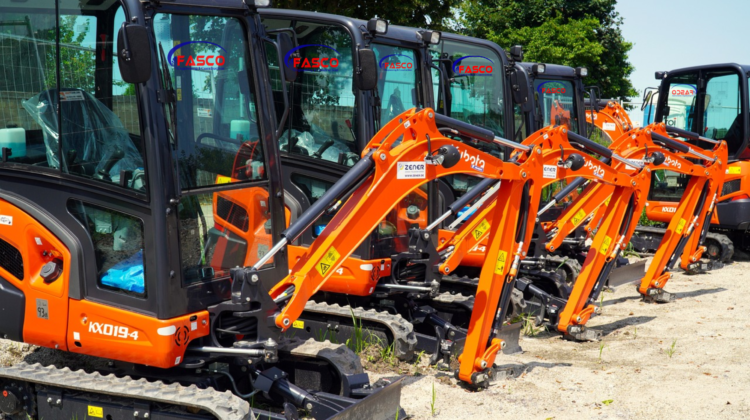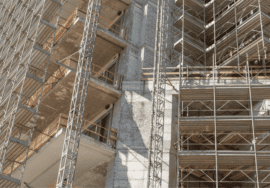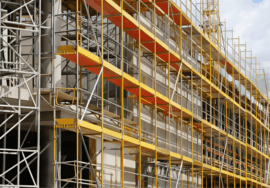
Affordable Light Equipment Rentals for Construction Needs
Strategies for Rental Light Construction Equipment
Comprehensive Strategies for Renting Light Construction Equipment
Rental light construction equipment is a common practice in the construction industry, offering flexibility and cost-effectiveness for various projects. Whether you are a contractor, DIY enthusiast, or a small business owner, knowing the right strategies for renting equipment can make a significant difference in the success of your project. In this blog, we will delve into comprehensive strategies for renting light construction equipment to help you navigate the rental process smoothly and efficiently.
Assessing Your Needs
Before diving into the rental process, it is crucial to assess your project requirements thoroughly. Understanding the specific tasks that need to be accomplished and the type of equipment necessary for the job is the first step in the rental journey. By having a clear picture of your project’s scope, timelines, and requirements, you can make informed decisions when selecting the equipment to rent.
For example, if you are planning to do landscaping, you might need tools like mini-excavators or skid-steer loaders. On the other hand, if your project involves heavy lifting, a forklift or a telehandler might be more appropriate. Having this clarity allows you to focus on the right equipment and avoid unnecessary rentals.
Researching Rental Companies
Researching different rental companies is essential to find a reliable partner for your equipment needs. Compare rental rates, equipment availability, customer reviews, and the range of services offered by various rental companies.
Look for companies that have a good reputation in the industry, as well as those that offer a wide range of equipment. It’s also wise to inquire about their maintenance practices; a company that regularly maintains its equipment will likely provide you with better service. Opting for a reputable rental company that provides well-maintained equipment and excellent customer service can ensure a smooth rental experience.
Checking Equipment Quality
Inspecting the equipment before renting is a critical step to avoid any unforeseen issues during your project. Look for signs of wear and tear, check for damages, and ensure that all necessary accessories are included with the rental equipment.
Renting high-quality, well-maintained equipment can enhance safety, efficiency, and productivity on the job site. If possible, request to see maintenance records to verify that the equipment has been regularly serviced.
Understanding Rental Terms
Familiarize yourself with the rental terms and conditions provided by the rental company. Pay close attention to rental duration, rates, deposit requirements, insurance coverage, and liability agreements.
Clear communication and understanding of the rental terms can help prevent misunderstandings and unexpected costs down the line. It’s also advisable to clarify any hidden fees, such as those for late returns or damage to the equipment.
Considering Rental Duration
Determining the rental duration based on your project timeline is crucial for effective planning. Avoid unnecessary rush fees or extensions by accurately estimating the time required to complete your project.
Planning ahead and scheduling the rental period accordingly can help you make the most of the rented equipment without incurring additional costs. Always include a buffer period in your estimate to account for unexpected delays.
Opting for Operator Training
If you or your team are not experienced in operating the rented equipment, consider taking advantage of operator training provided by the rental company.
Proper training can enhance safety protocols, improve equipment handling skills, and boost overall productivity on the job site. Investing in operator training is a wise decision to ensure smooth operations during your project. Some rental companies offer free training sessions or tutorials that can be beneficial.
Insurance Coverage
Verify the insurance coverage provided for the rented equipment and understand the extent of coverage included in the rental agreement.
Consider purchasing additional insurance if necessary to protect against potential damages, liabilities, or unforeseen circumstances during the rental period. Having adequate insurance coverage can offer peace of mind throughout your project. Always read the fine print in your insurance agreement.
Maintenance and Support
Inquire about maintenance support and emergency services offered by the rental company. Knowing that you have access to maintenance assistance and support in case of equipment malfunctions or breakdowns can be reassuring during your project.
Prompt maintenance services can minimize downtime and keep your project on track. Establishing a clear line of communication with the rental company can be crucial for quick resolutions.
Conclusion
By following these strategies for renting light construction equipment, you can streamline the rental process, optimize project workflows, and achieve successful project outcomes. Whether you are embarking on a small renovation project or a larger construction endeavor, leveraging these strategies can help you make informed decisions and maximize the efficiency of your project.
If you have any further questions or need assistance with renting construction equipment, feel free to reach out for personalized guidance and support from Fasco Engineering.






